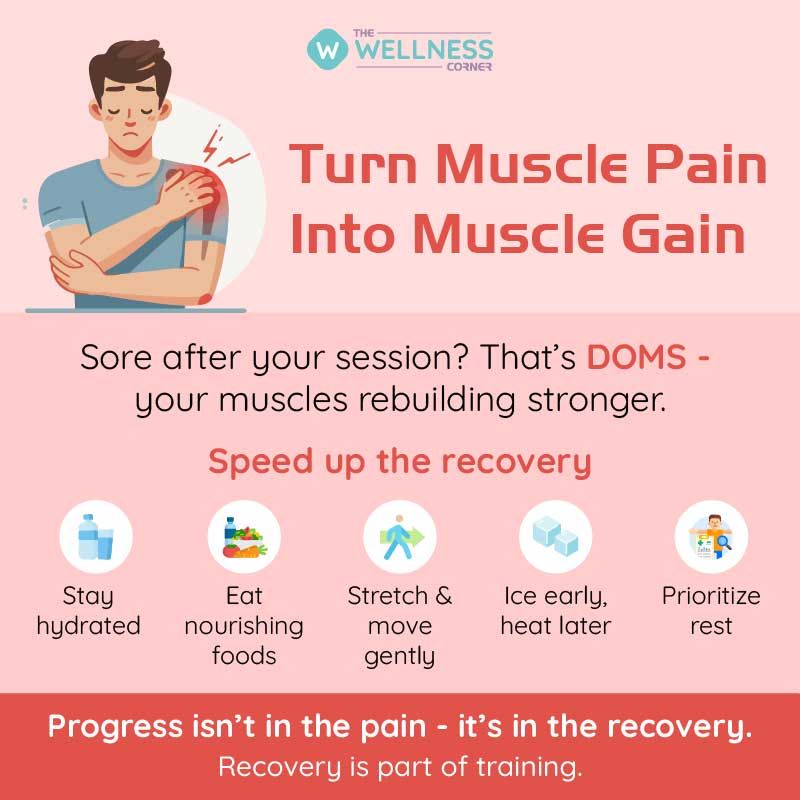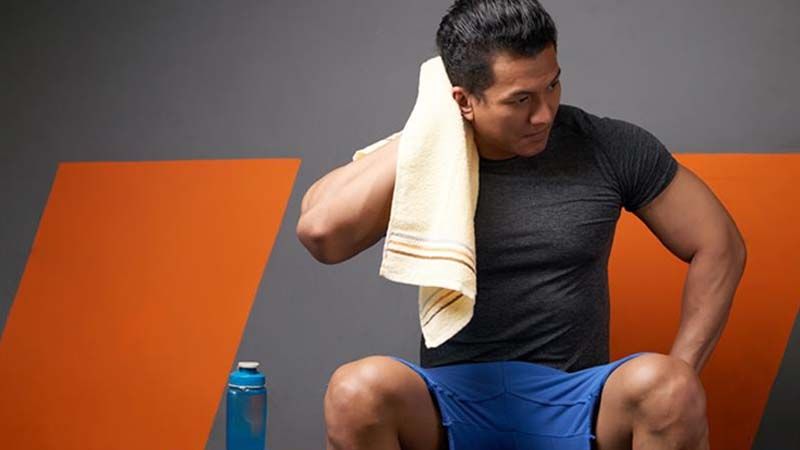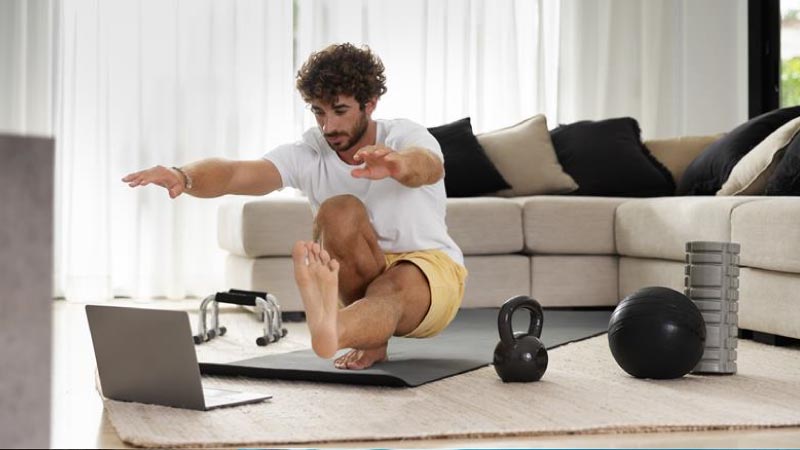Muscle Soreness After The Gym: Tips For Faster Recovery
- 12 hours ago
Have you ever wrapped up a solid workout feeling great, only to wake up the next day struggling to climb stairs or even lift your arms? That lingering ache is known as Delayed Onset Muscle Soreness (DOMS). It’s something most gym-goers, whether beginners or seasoned lifters, experience after an intense session.
Although it can feel uncomfortable, muscle soreness is actually a positive sign that your body is adapting, healing, and getting stronger. The trick is not to let it stop you. With the right recovery practices, you can minimize the discomfort, bounce back faster, and stay consistent with your fitness routine.
Let’s take a closer look at why soreness happens and how to recover quickly without losing momentum.
Also Read: Signs Your Workout Is Harming You Instead Of Helping

What Causes Muscle Soreness?
Muscle soreness is your body’s response to tiny microscopic tears in muscle fibers during physical activity. These micro-tears usually occur when you:
- Try a new workout
- Increase your weights or reps
- Engage in eccentric motions (e.g., lowering dumbbells or jogging downhill).
The repair process that follows is what strengthens your muscles. However, the inflammation and stiffness that accompany healing are what you feel as soreness.
DOMS generally starts within 12–24 hours, peaks around 48 hours, and fades within a few days.

How To Recover Quickly From Muscle Soreness?
Instead of just waiting it out, you can actively support your body’s healing with these proven strategies:
1. Keep Yourself Hydrated
Water is your best friend when it comes to recovery. It aids in the delivery of nutrients to your muscles, eliminates waste, and lowers inflammation. Without enough fluids, soreness may feel more intense.
- Before exercise: Drink a glass or two of water.
- During exercise: Sip small amounts regularly.
- After exercise: Replenish with water or natural electrolyte-rich drinks like coconut water.
Quick tip: Light-colored urine usually means you’re hydrated; dark yellow indicates you need more fluids.
Also Read: How Much Water Should You Drink During Workout?
2. Refuel With Balanced Nutrition
After challenging your muscles, proper nutrition is critical for repair and growth.
- Protein: Essential for rebuilding muscle fibers. Aim for 20-30g post-workout.
Sources: Eggs, chicken, paneer, tofu, lentils, Greek yogurt.
- Carbohydrates: Restore glycogen (energy) reserves.
Sources: Oats, brown rice, sweet potatoes, bananas.
- Healthy fats & anti-inflammatory foods: Help reduce swelling.
Sources: Walnuts, flaxseeds, chia seeds, turmeric, and ginger.
Meal idea: A smoothie with banana, protein powder, spinach, and peanut butter is quick, tasty, and effective.
3. Stretch & Improve Mobility
Stretching keeps muscles flexible, improves circulation, and eases tightness.
- Before an exercise, stretch dynamically with leg swings and arm circles.
- Do static stretches (like hamstring stretch, quad stretch) afterward, holding each for 20-30 seconds.
Gentle yoga flows, such as Child’s Pose or Cat-Cow, are also excellent for reducing stiffness.

4. Choose Active Recovery
Rest doesn’t always mean lying still. Light activity promotes circulation, which speeds up healing.
Great options include:
Pro tip: Schedule one active recovery day each week to help muscles recover without halting progress.
5. Massage Or Foam Rolling
Massage improves blood flow, reduces muscle tightness, and helps with quicker healing. If a professional massage isn’t available, a foam roller is a fantastic at-home tool.
How to foam roll?
- Roll slowly across sore areas.
- Pause when you hit a tender spot.
- Spend 1-2 minutes per muscle group.
This is especially useful for large muscles like the quads, calves, and back.
Also Read: Can Massage Give A Boost To Your Fitness Journey?
6. Prioritize Rest And Quality Sleep
Recovery doesn’t happen in the gym; it happens while you rest. Sleep is when your body produces growth hormones that repair and strengthen muscle fibers.
- Aim for 7-9 hours of sleep every night.
- Create a routine by sleeping and waking at consistent times.
- Avoid screens right before bed to improve sleep quality.
Even a short 20-minute nap can give your body an extra boost in recovery.
Also Read: How Sleeping Less Than 6 Hours Can Harm Your Health?

7. Heat And Cold Therapy
Heat and cold can relieve discomfort in different ways:
- Cold (ice packs, cold showers, ice baths): Best soon after a workout to reduce inflammation.
- Heat (warm showers, heating pads, saunas): Better for lingering stiffness, as it relaxes muscles and improves blood flow.
Alternating between hot and cold (contrast therapy) can also be highly effective.
8. Consider Supplement Support (Optional)
Supplements aren’t mandatory, but some may give you a recovery edge:
- BCAAs: Reduce muscle breakdown.
- Magnesium: Helps relax muscles and prevent cramps.
- Omega-3s (fish oil, flaxseed oil): Anti-inflammatory benefits.
- Curcumin (from turmeric): Natural inflammation fighter.
Always consult a healthcare professional before adding supplements.
9. Pay Attention To Your Body
Not all discomfort is normal soreness. Learn to distinguish between DOMS and injury:
- Soreness: Feels dull, stiff, or tender; improves within a few days.
- Injury pain can be strong, sudden, or intense, with swelling and limited movement.
If pain lingers longer than a week or interferes with daily activities, seek medical advice.
How To Reduce Muscle Soreness In The First Place?
Although soreness can’t be completely avoided, especially when trying something new, you can minimize it with a few simple steps:
- Warm up properly before exercising.
- Gradually increase weights or intensity instead of making sudden jumps.
- Always cool down with stretches after workouts.
- Recover for at least 48 hours before training the same muscle group again.
Final Thoughts
Muscle soreness after the gym is not a setback; it’s part of the progress you’re making. Instead of dreading it, view it as a reminder that your muscles are adapting and getting stronger. By staying hydrated, eating nourishing foods, incorporating stretching, using active recovery, and prioritizing rest, you can ease the discomfort and get back to training sooner.
Consistency is what drives results, not punishing workouts or constant soreness. Be kind to your body, follow these recovery tips, and over time you’ll find that your muscles adapt, recover faster, and keep you moving toward your fitness goals.
So next time you wake up sore, don’t panic, take it as a badge of progress and give your body the care it deserves.









